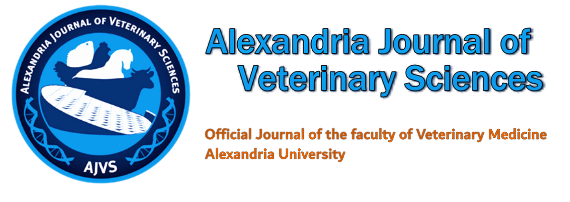
| Original Article | ||||||||||||||||||||||||||||||
AJVS. 2016; 51(1): 147-154 doi: 10.5455/ajvs.239958 Development of the Sacrum and Tail in the white New Zealand Rabbit (Oryctolagus cuniculus) Basma Kamal, Reda F. Rashed, Atef Erasha.
| ||||||||||||||||||||||||||||||
| How to Cite this Article |
| Pubmed Style Kamal B, Rashed RF, Erasha A. Development of the Sacrum and Tail in the white New Zealand Rabbit (Oryctolagus cuniculus). AJVS. 2016; 51(1): 147-154. doi:10.5455/ajvs.239958 Web Style Kamal B, Rashed RF, Erasha A. Development of the Sacrum and Tail in the white New Zealand Rabbit (Oryctolagus cuniculus). https://www.alexjvs.com/?mno=239958 [Access: May 03, 2025]. doi:10.5455/ajvs.239958 AMA (American Medical Association) Style Kamal B, Rashed RF, Erasha A. Development of the Sacrum and Tail in the white New Zealand Rabbit (Oryctolagus cuniculus). AJVS. 2016; 51(1): 147-154. doi:10.5455/ajvs.239958 Vancouver/ICMJE Style Kamal B, Rashed RF, Erasha A. Development of the Sacrum and Tail in the white New Zealand Rabbit (Oryctolagus cuniculus). AJVS. (2016), [cited May 03, 2025]; 51(1): 147-154. doi:10.5455/ajvs.239958 Harvard Style Kamal, B., Rashed, . R. F. & Erasha, . A. (2016) Development of the Sacrum and Tail in the white New Zealand Rabbit (Oryctolagus cuniculus). AJVS, 51 (1), 147-154. doi:10.5455/ajvs.239958 Turabian Style Kamal, Basma, Reda F. Rashed, and Atef Erasha. 2016. Development of the Sacrum and Tail in the white New Zealand Rabbit (Oryctolagus cuniculus). Alexandria Journal of Veterinary Sciences, 51 (1), 147-154. doi:10.5455/ajvs.239958 Chicago Style Kamal, Basma, Reda F. Rashed, and Atef Erasha. "Development of the Sacrum and Tail in the white New Zealand Rabbit (Oryctolagus cuniculus)." Alexandria Journal of Veterinary Sciences 51 (2016), 147-154. doi:10.5455/ajvs.239958 MLA (The Modern Language Association) Style Kamal, Basma, Reda F. Rashed, and Atef Erasha. "Development of the Sacrum and Tail in the white New Zealand Rabbit (Oryctolagus cuniculus)." Alexandria Journal of Veterinary Sciences 51.1 (2016), 147-154. Print. doi:10.5455/ajvs.239958 APA (American Psychological Association) Style Kamal, B., Rashed, . R. F. & Erasha, . A. (2016) Development of the Sacrum and Tail in the white New Zealand Rabbit (Oryctolagus cuniculus). Alexandria Journal of Veterinary Sciences, 51 (1), 147-154. doi:10.5455/ajvs.239958 |








